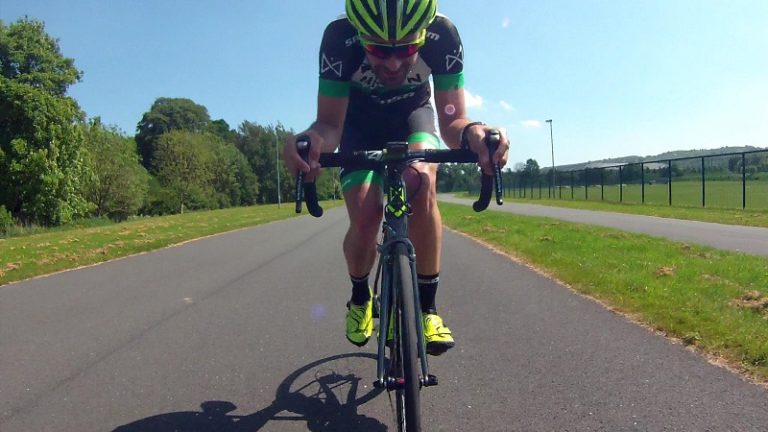
Important as it is, the bike you ride will only take you so far. However, with a team of experts to guide your choice in store or online, we can certainly help make choosing a road bike an absolute breeze.
But the rest is very much up to you.
If you’re looking to kick your cycling speed up a gear by turbocharging your training, we’ve got 10 pro secrets to reveal that will see your average speeds heading upwards…
1. Optimise your aerodynamics
If you’ve ever seen Boris Johnson on a bike, you’ll know how important good aerodynamics are to going faster.
Overcoming air resistance is a huge part of the battle, and it’s largely to do with your position on the bike. At around 20mph, two-thirds of a rider’s effort is used to overcome air resistance.
Tom Barras (Training-Pro.co.uk), a professional rider for 15 years and full-time cycling coach, reckons that most riders could benefit from adapting their position towards being more aero:
“Riding with forearms flat and hands on the lever hoods has been proven to be the fastest position on drop handlebars. With a bit of practice, it’s pretty comfy too.”
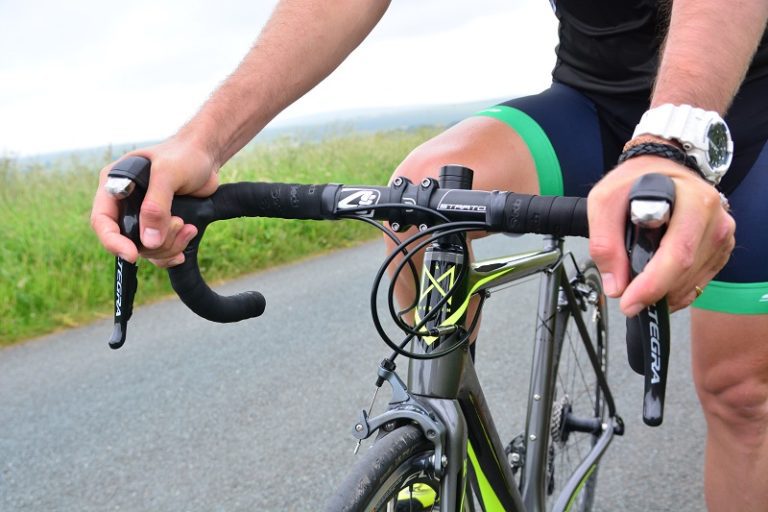
2. Drink and ride
If you’re heading out on a long ride, don’t wait until you feel depleted to top up on carbs and calories with a sports drink.
You can help spare your precious muscle glycogen stores by about 50% in the first hour of a ride alone if you top them up with a sports drink early into your ride or before you hit the road.
3. Stretch yourself
A growing body of research suggests that pre-exercise stretching actually causes muscles to relax – and this can reduce your force and power output for longer than an hour.
Try swapping stretches before the ride for stretches immediately after, concentrating on quads, hamstrings and glutes.
4. Position of power
Getting the correct riding position will not only mean you’re more comfortable, but also allow you to make the most of your power.
Make sure your riding position is comfortable for the duration of your longest rides. If you have a power meter, use it to see how tweaks in position affect power
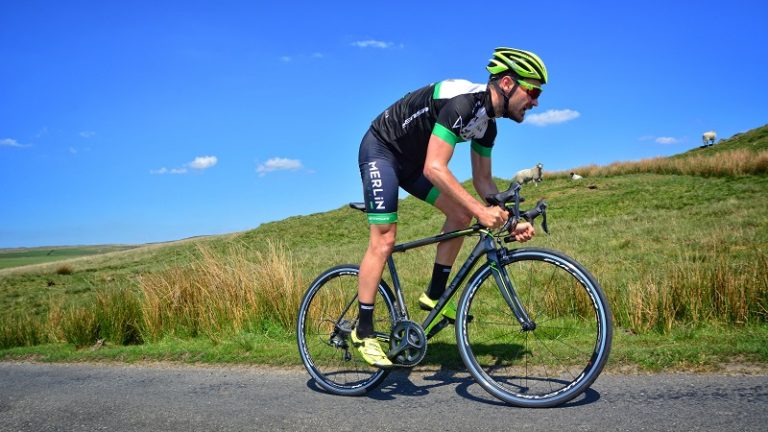
5. ‘B’ at the top of your game
If you’re lacking B vitamins, your body struggles to build muscle and can’t produce oxygen-carrying red blood cells.
If you’re after a combination of speed and endurance, make sure you eat foods rich in B vitamins, such as fortified cereals, marmite, whole grains or dark-green veggies.
6. Start as you can’t go on
For those looking to max efforts up to 4km – for example short track events – you should forget trying to save something for the end and instead go full out from the start.
Sport scientists have discovered that those who start faster than their average pace (rather than try to conserve energy) can actually increase their time to exhaustion for short, high-intensity events (e.g. a 4km pursuit on the velodrome).
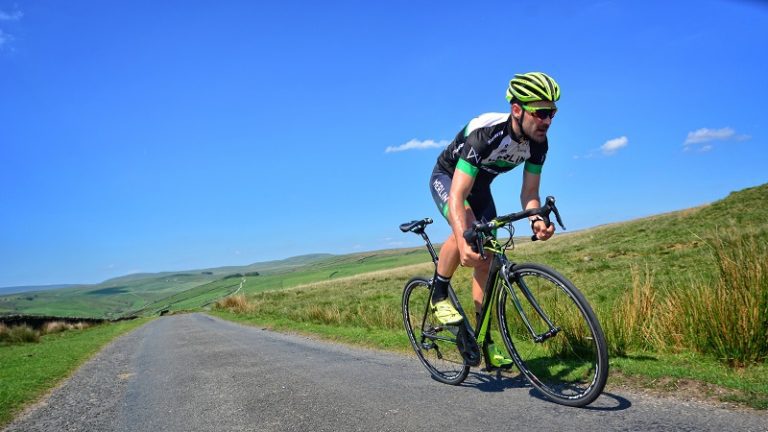
7. Don’t just hit the road, do HIIT at the track
Introducing a weekly short session of high-intensity interval training (HIIT) will boost your endurance and help you maintain those speeds for longer.
Endurance rides only develop your slow-twitch muscle fibres, but HIIT training helps you call on your high-speed fibres.
HIIT training also teaches your body to tap into your fat stores to refuel, making it a more efficient fat burner.
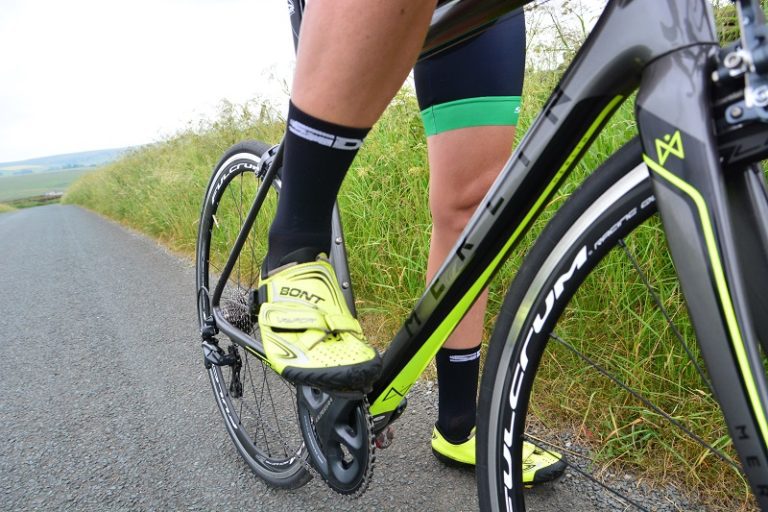
8. Squeeze out a couple more
The best way to ensure you can finish strong is simply to train your muscles to perform even when you feel depleted.
So, at the leg press or squat rack, instead of calling it quits after your last rep, just drop the weight slightly lower and squeeze out a few more.
The bonus set will work the slow twitch fibres, having exhausted your fast-twitch earlier.
9. Give yourself the jump
Plyometrics training (consisting of explosive jumping and hopping) is your passport to muscles that can move on demand and to developing strength at speed.
Quite simply, it gives you more power to transfer into speed.
10. Dig deep strategically
Making your big efforts at the right time makes all the difference in races. Often races are won not by the rider who rides the fastest, but the rider who slows down the least. The smart rider knows when to save energy and when to dig into their reserves.
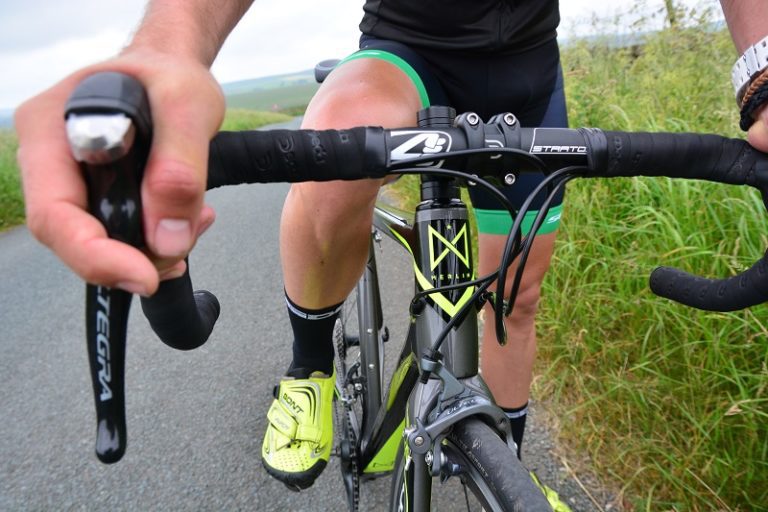
If you want to up your game and need advice about training, bikes and accessories, we’re constantly sharing secrets to improve your cycling in our newsletters. And check out our upcoming coaching videos featuring Tom Barras for extra pro tips!
Be sure to sign up and stay on top of the latest cycling offers and advice.
